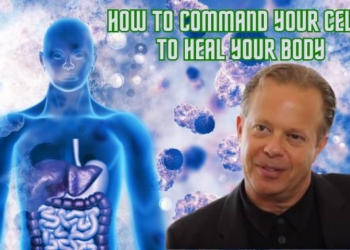
Methods that Are Sure to Reduce Stiffness and Inflammation
If you are suffering from pain or discomfort in your knees, elbows, hips, or other joints, then you’re probably wondering what the fastest way is to find relief and get back to feeling normal again. Unfortunately, joint pain can be caused by a wide array of issues including overuse, weight gain, injury (sprain or strain), tendonitis, inflammation, gout, cartilage breakdown, osteoporosis, and more. One of the major challenges of getting joint pain under control is that sometimes it can be hard to identify the root cause of it.
However, there are methods you can try – both on your own and under the guidance of a healthcare professional – that are intended to help bring relief. Here are our top 10 tips for relieving joint pain.
Tip #1 – Rest
Usually when joint pain flares up, that’s your body’s way of telling you to relax and take a few days off. “Toughing it out” or trying to push through joint pain by putting the joint under duress is a bad idea. Give the joint two or three days to heal on its own. If your pain levels aren’t going down, you can move on to other tactics.
Tip #2 – Over-the-Counter Meds
Over-the-counter medications (aka OTCs, for short) are effective in treating the pain symptoms associated with joint pain. Acetaminophen (Tylenol) and oral nonsteroidal anti-inflammatory drugs (NSAIDs) such as ibuprofen (Advil) are both great options. Take these in the recommended dosage. Keep in mind, OTCs will only help with the pain symptoms – not the underlying issue of what’s causing the joint pain.
Tip #3 – Heat & Ice Therapy
Heat and ice therapy are both ways in which to relieve joint pain, swelling, and reducing spasms in the muscles adjacent to the joint. You don’t need to spend money on heating or ice packs. Household items such as heated dishcloths or Ziploc bags filled with ice can be fashioned into heating/cooling packs. Use trial and error between these two methods to see what brings relief to your joint pain.
Tip #4 – Weight Loss
Excess weight can put additional stress on your knees and hips. If you’re ten pounds overweight, that equates to an additional thirty pounds of pressure being put on your knees. Losing that extra weight can remove the strain so that your knees can return to full health. Go with low impact exercises such as swimming, walking, or cycling. Don’t forget to practice good dietary habits.
Tip #5 – Braces, Shoe Inserts, and Canes
Braces, shoe inserts, and canes are all ways to ease the amount of pressure being put on the joints located throughout the legs, which may lead to overall reduced pain if used on an extensive basis. Most pharmacies offer a wide variety of these types of devices and can make a recommendation based on your area of concern.
Tip #6 – Topicals
Topical treatment can be applied on the skin over the joint in which you’re experiencing pain or discomfort. One of the most popular topicals is called capsaicin, which is derived from chili pepper extract. It’s a great holistic method for those suffering with arthritis and can be purchased over-the-counter.
Tip #7 – Physical Therapy
Sometimes physical therapy (PT, for short) is required in order to address the root cause of your joint pain. The goal with PT is to increase mobility and strength of the joint and the muscles surrounding it so that overall joint health is increased. It’s important that a physical therapist guides you on technique and routine so that you know exactly what to do and how to do it. Otherwise, you may further aggravate your injury.
Tip #8 – Prescription Medications
For those suffering with chronic joint pain, sometimes physicians will prescribe medication to offer their patients joint pain relief. This is usually done only in the event that over-the-counter medication and holistic methods aren’t working. In order to receive prescription medication, you will need to see a physician so that they can examine you.
Tip #9 – Injections
Depending on the severity of your joint pain, your physician may suggest one of two types of injections. A corticosteroid injection will reduce your pain and inflammation in the joint and provide relief for several weeks. A hyaluronic acid injection is the second type; it will lubricate the joint, reduce inflammation and pain, and should help improve mobility on a short-term basis.
Tip #10 – Surgery
As a last resort, surgery may be required in order to address the root cause of your joint pain. For instance, an osteotomy is a minimally-invasive procedure that reshapes the tibia and femur to relieve pressure and joint pain. It is typically used on patients in the early stages of osteoarthritis. Surgery, of course, is done on a case-by-case basis and is only performed when absolutely necessary. Most individuals are able to find joint pain relief through one or a combination of the aforementioned methods.
Get Joint Pain Relief Today
If you are suffering with joint pain and have already tried some of these methods on your own, then it may be time to seek the help of professionals. Find a pain management clinic in your area to help you to receive the relief you need. There is no reason to suffer with joint pain in your knees, elbows, or hips any longer. The sooner you see a physician the sooner you can get on a path to recovery.








![Zero-Cost Method to Increase Motivation and Dopamine | Neuroscientist Andrew Huberman [VIDEO+TRANSCRIPT]](https://consciouslifenews.com/wp-content/uploads/2022/12/boost-moivation-andrew-huberman-350x250.jpg)






